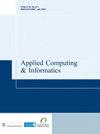利用Fb-Prophet机器学习模型预测四个疫情高发国家(美国、巴西、印度和俄罗斯)的新冠肺炎疫情规模
IF 4.9
Q1 COMPUTER SCIENCE, INFORMATION SYSTEMS
引用次数: 30
摘要
目的截至2020年7月30日,登记的2019年新型冠状病毒疾病(新冠肺炎)病例超过1700万例,其中67.15万例死亡。然而,目前还没有立即的药物或疫苗来控制这一危险的流行病,研究人员正试图实施数学或时间序列流行病模型,用全国范围的数据来预测疾病的严重程度。设计/方法/方法在本研究中,作者考虑了四个受新冠肺炎影响最严重的国家(如美国、巴西、印度和俄罗斯)的新冠肺炎每日感染数据,对总感染进行了60天的预测。为此,作者采用了一种名为Fb-Prophet的机器学习(ML)模型,结果证实,收集了截至7月底的四个国家的确诊病例总数,并通过采用Prophet逻辑增长模型进行了预测。FindingsResults强调,到9月底,估计美国、巴西、印度和俄罗斯的疫情可能分别达到756万例、465万例、301万例和122万例。作者发现了对每日病例的一些低估和高估,实际病例与预测病例的线性模型发现p值(<2.2e-16)低于0.995的R2值。原创性/价值在本文中,作者采用了Fb-Prophet ML模型,因为它可以预测流行病趋势并推导出流行病曲线。本文章由计算机程序翻译,如有差异,请以英文原文为准。
Forecasting of COVID-19 epidemic size in four high hitting nations (USA, Brazil, India and Russia) by Fb-Prophet machine learning model
PurposeAs of July 30, 2020, more than 17 million novel coronavirus disease 2019 (COVID-19) cases were registered including 671,500 deaths. Yet, there is no immediate medicine or vaccination for control this dangerous pandemic and researchers are trying to implement mathematical or time series epidemic models to predict the disease severity with national wide data.Design/methodology/approachIn this study, the authors considered COVID-19 daily infection data four most COVID-19 affected nations (such as the USA, Brazil, India and Russia) to conduct 60-day forecasting of total infections. To do that, the authors adopted a machine learning (ML) model called Fb-Prophet and the results confirmed that the total number of confirmed cases in four countries till the end of July were collected and projections were made by employing Prophet logistic growth model.FindingsResults highlighted that by late September, the estimated outbreak can reach 7.56, 4.65, 3.01 and 1.22 million cases in the USA, Brazil, India and Russia, respectively. The authors found some underestimation and overestimation of daily cases, and the linear model of actual vs predicted cases found a p-value (<2.2e-16) lower than the R2 value of 0.995.Originality/valueIn this paper, the authors adopted the Fb-Prophet ML model because it can predict the epidemic trend and derive an epidemic curve.
求助全文
通过发布文献求助,成功后即可免费获取论文全文。
去求助
来源期刊

Applied Computing and Informatics
Computer Science-Information Systems
CiteScore
12.20
自引率
0.00%
发文量
0
审稿时长
39 weeks
期刊介绍:
Applied Computing and Informatics aims to be timely in disseminating leading-edge knowledge to researchers, practitioners and academics whose interest is in the latest developments in applied computing and information systems concepts, strategies, practices, tools and technologies. In particular, the journal encourages research studies that have significant contributions to make to the continuous development and improvement of IT practices in the Kingdom of Saudi Arabia and other countries. By doing so, the journal attempts to bridge the gap between the academic and industrial community, and therefore, welcomes theoretically grounded, methodologically sound research studies that address various IT-related problems and innovations of an applied nature. The journal will serve as a forum for practitioners, researchers, managers and IT policy makers to share their knowledge and experience in the design, development, implementation, management and evaluation of various IT applications. Contributions may deal with, but are not limited to: • Internet and E-Commerce Architecture, Infrastructure, Models, Deployment Strategies and Methodologies. • E-Business and E-Government Adoption. • Mobile Commerce and their Applications. • Applied Telecommunication Networks. • Software Engineering Approaches, Methodologies, Techniques, and Tools. • Applied Data Mining and Warehousing. • Information Strategic Planning and Recourse Management. • Applied Wireless Computing. • Enterprise Resource Planning Systems. • IT Education. • Societal, Cultural, and Ethical Issues of IT. • Policy, Legal and Global Issues of IT. • Enterprise Database Technology.
 求助内容:
求助内容: 应助结果提醒方式:
应助结果提醒方式:


